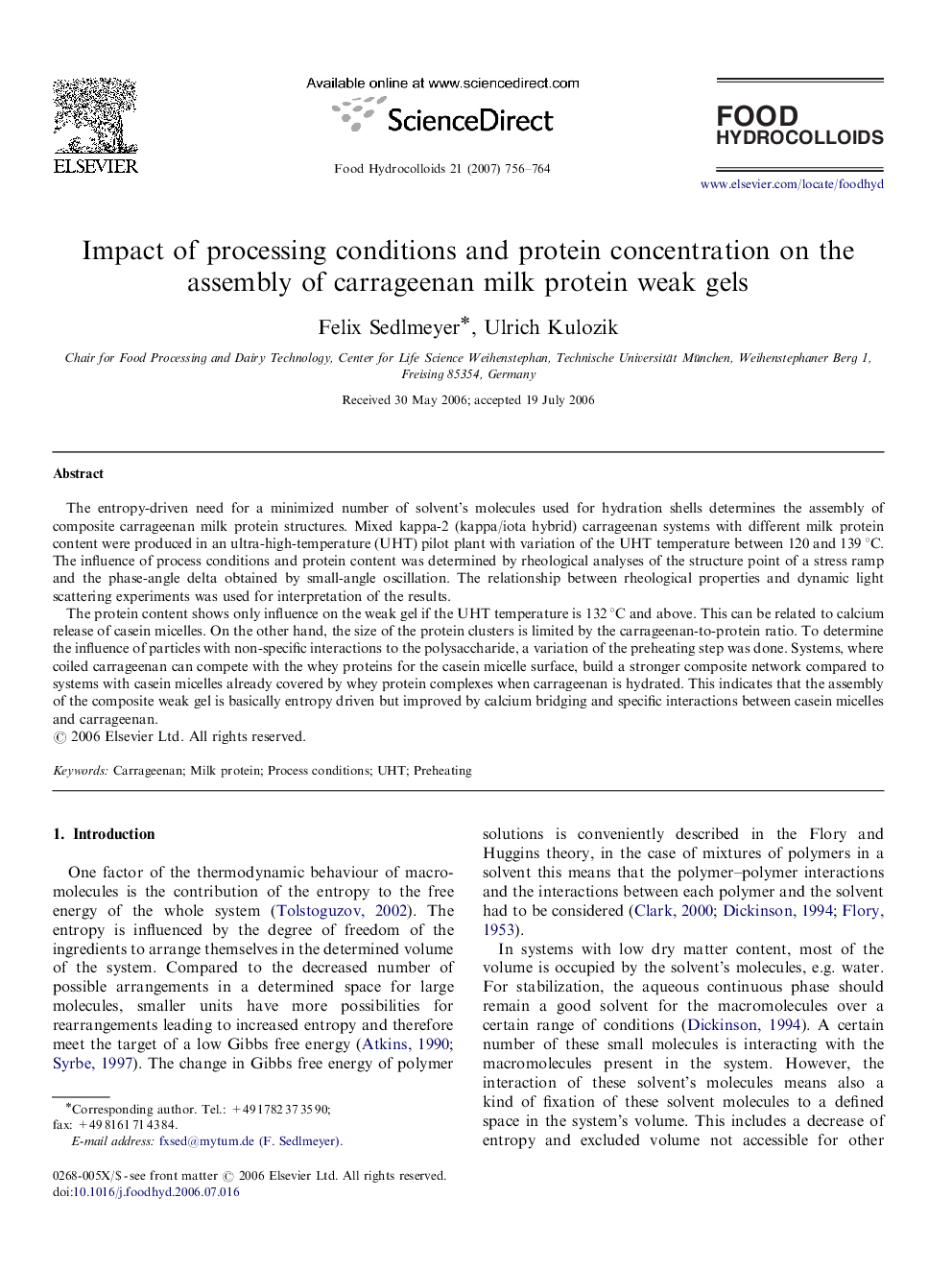| Article ID | Journal | Published Year | Pages | File Type |
|---|---|---|---|---|
| 605935 | Food Hydrocolloids | 2007 | 9 Pages |
The entropy-driven need for a minimized number of solvent's molecules used for hydration shells determines the assembly of composite carrageenan milk protein structures. Mixed kappa-2 (kappa/iota hybrid) carrageenan systems with different milk protein content were produced in an ultra-high-temperature (UHT) pilot plant with variation of the UHT temperature between 120 and 139 °C. The influence of process conditions and protein content was determined by rheological analyses of the structure point of a stress ramp and the phase-angle delta obtained by small-angle oscillation. The relationship between rheological properties and dynamic light scattering experiments was used for interpretation of the results.The protein content shows only influence on the weak gel if the UHT temperature is 132 °C and above. This can be related to calcium release of casein micelles. On the other hand, the size of the protein clusters is limited by the carrageenan-to-protein ratio. To determine the influence of particles with non-specific interactions to the polysaccharide, a variation of the preheating step was done. Systems, where coiled carrageenan can compete with the whey proteins for the casein micelle surface, build a stronger composite network compared to systems with casein micelles already covered by whey protein complexes when carrageenan is hydrated. This indicates that the assembly of the composite weak gel is basically entropy driven but improved by calcium bridging and specific interactions between casein micelles and carrageenan.
